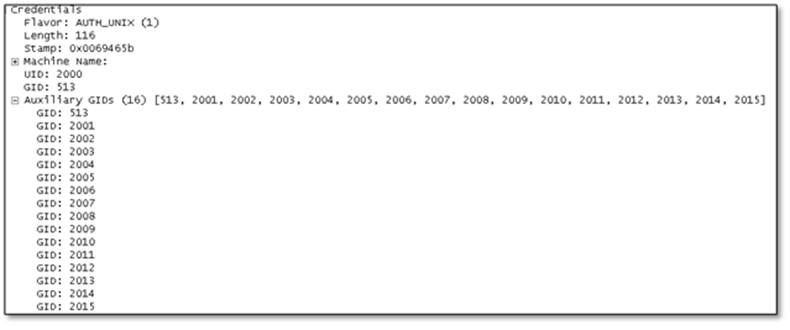Understand auxiliary/supplemental groups with NFS in Azure NetApp Files
NFS has a specific limitation for the maximum number of auxiliary GIDs (secondary groups) that can be honored in a single NFS request. The maximum for AUTH_SYS/AUTH_UNIX is 16. For AUTH_GSS (Kerberos), the maximum is 32. This is a known protocol limitation of NFS.
Azure NetApp Files provides the ability to increase the maximum number of auxiliary groups to 1,024. This is performed by avoiding truncation of the group list in the NFS packet by prefetching the requesting user’s group from a name service, such as LDAP.
How it works
The options to extend the group limitation work the same way the -manage-gids option for other NFS servers works. Rather than dumping the entire list of auxiliary GIDs a user belongs to, the option looks up the GID on the file or folder and returns that value instead.
The command reference for mountd notes:
-g or --manage-gids
Accept requests from the kernel to map user id numbers into lists of group id numbers for use in access control. An NFS request will normally except when using Kerberos or other cryptographic authentication) contains a user-id and a list of group-ids. Due to a limitation in the NFS protocol, at most 16 groups ids can be listed. If you use the -g flag, then the list of group ids received from the client will be replaced by a list of group ids determined by an appropriate lookup on the server.
When an access request is made, only 16 GIDs are passed in the RPC portion of the packet.
Any GID beyond the limit of 16 is dropped by the protocol. Extended GIDs in Azure NetApp Files can only be used with external name services such as LDAP.
Potential performance impacts
Extended groups have a minimal performance penalty, generally in the low single digit percentages. Higher metadata NFS workloads would likely have more effect, particularly on the system’s caches. Performance can also be affected by the speed and workload of the name service servers. Overloaded name service servers are slower to respond, causing delays in prefetching the GID. For best results, use multiple name service servers to handle large numbers of requests.
“Allow local users with LDAP” option
When a user attempts to access an Azure NetApp Files volume via NFS, the request comes in a numeric ID. By default, Azure NetApp Files supports extended group memberships for NFS users (to go beyond the standard 16 group limit to 1,024). As a result, Azure NetApp files attempts to look up the numeric ID in LDAP in an attempt to resolve the group memberships for the user rather than passing the group memberships in an RPC packet.
Due to that behavior, if that numeric ID can't be resolved to a user in LDAP, the lookup fails and access is denied, even if the requesting user has permission to access the volume or data structure.
The Allow local NFS users with LDAP option in Active Directory connections is intended to disable those LDAP lookups for NFS requests by disabling the extended group functionality. It doesn't provide “local user creation/management” within Azure NetApp Files.
For more information about the option, including how it behaves with different volume security styles in Azure NetApp files, see Understand the use of LDAP with Azure NetApp Files.
Next steps
Feedback
Coming soon: Throughout 2024 we will be phasing out GitHub Issues as the feedback mechanism for content and replacing it with a new feedback system. For more information see: https://aka.ms/ContentUserFeedback.
Submit and view feedback for
